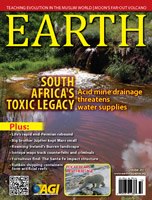 It seemed like as good a place as any to brood, so whelks covered it with their eggs. Then crabs crawled onto the scene in a slow-motion seafloor pursuit. Octopi floated in from the murky abyss. Together they tore the whelks from the shells, and left behind a mound of empty conches as a warning to others. Sunken shipping containers are not safe for whelks. But they might make a safe refuge for a lot of other sea creatures, according to a new study that examined how the detritus of seaborne commerce affects residents of the deep sea.
It seemed like as good a place as any to brood, so whelks covered it with their eggs. Then crabs crawled onto the scene in a slow-motion seafloor pursuit. Octopi floated in from the murky abyss. Together they tore the whelks from the shells, and left behind a mound of empty conches as a warning to others. Sunken shipping containers are not safe for whelks. But they might make a safe refuge for a lot of other sea creatures, according to a new study that examined how the detritus of seaborne commerce affects residents of the deep sea.
Various estimates suggest that thousands of sturdy metal shipping containers spill overboard every year — but no one knows the exact number. They wind up strewn across the world’s oceans in both shallow and deep water. In some ways, the containers are not very different from the tanks, old railcars or decommissioned ships that are occasionally used to build artificial reefs. They can initiate local ecosystems, attract new species and influence the local flow of currents. But there is one important difference: Sunken containers are unplanned.
In February 2004, a 12-meter-long container full of rubber tires fell off a ship called the Med Taipei, which was carrying goods from San Francisco to Los Angeles, and landed in the Monterey Bay National Marine Sanctuary in about 1,300 meters of water. A few months later, the red container appeared on the video monitor of a submersible on an unrelated mission for the Monterey Bay Aquarium Research Institute, which alerted the sanctuary about the container.
In March of this year, sanctuary marine biologist Andrew DeVogelaere and his colleagues began exploring how the shipping container that fell into the sanctuary is affecting the environment about 20 kilometers offshore Monterey, Calif.
When DeVogelaere and his team visited the site using a submersible ROV to explore, they found crabs and octopi thriving around the container— and very little corrosion of the metal container itself. Changes there appear to be slow, DeVogelaere says. “I was surprised by how little the con- tainer had changed in seven years since it was dropped.”
In this initial survey, the team collected 30-centimeter sediment cores and recorded sediment data to create a baseline to monitor future sediment changes and species succession. DeVogelaere and his colleagues plan to revisit the container every few years to track the changes
One important question they’ll study is whether and how the container is changing the grain size of sediments that accumulate at the site. Sedimentation could change as local currents adjust to flow around the new impediment on the seafloor. Determining sediment changes is important because, for instance, burrowing creatures may move closer or further from the container in search of their preferred type of sediment.
“We’re interested in changes in the local ecology,” DeVogelaere says. “Putting something with a hard substratum right in the middle of soft mud — how does that change things?”
For one thing, says marine biologist Chou Loke Ming of the National University of Singapore who studies shallow-water artificial reefs in the Pacific but was not involved in the current study, “it will affect the living communities inside the seafloor, like mollusks, worms and sea fans.”
Grain size also affects how fast the seafloor absorbs potential pollutants. This container is full of rubber tires, according to customs paperwork, but others carry chemicals that could seep out into the surrounding environment. Such material could be poisonous, or it could provide food for opportunistic deep-sea dwellers. “We can’t say whether a change is necessarily a good or a bad thing,” says marine ecologist Tom Wilding of the Scottish Association for Marine Science in Scotland who was not involved in this study.
One container could make for a good case study, DeVogelaere says, but researchers are more curious about what might emerge from studying multiple containers or even networks of contain- ers. There’s no telling what effect the containers might have; it could even be that marine populations might travel between them, enabling long-distance migration among these human-made seafloor “islands” in the otherwise barren deep.
The “stepping stone” idea is certainly possible, Chou says. But Wilding notes that whatever the effect of shipping con- tainers on the seafloor, “it’s on a very small scale … it’s a drop in the ocean, so to speak.”
See also the news story as it appeared in the October issue of EARTH Magazine: [pdf]